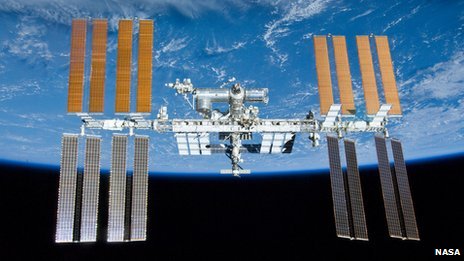- Feb 12, 2007
- 59,384
- 24,018
- 2,290
This is very coolth: the universe is expanding rapidly.
More final frontier for everyone!
(And note the appearance of USMB's Ringel trying to pass for a Belgian.)
IT'S the ultimate sleeper agent. An energy field lurking inactive since the big bang might now be causing the expansion of the universe to accelerate.
In the late 1990s, observations of supernovae revealed that the universe has started expanding faster and faster over the past few billion years. Einstein's equations of general relativity provide a mechanism for this phenomenon, in the form of the cosmological constant, also known as the inherent "dark energy" of space-time. If this constant has a small positive value, then it causes space-time to expand at an ever-increasing rate. However, theoretical calculations of the constant and the observed value are out of whack by about 120 orders of magnitude.
To overcome this daunting discrepancy, physicists have resorted to other explanations for the recent cosmic acceleration. One explanation is the idea that space-time is suffused with a field called quintessence. This field is scalar, meaning that at any given point in space-time it has a value, but no direction. Einstein's equations show that in the presence of a scalar field that changes very slowly, space-time will expand at an ever-increasing rate.
Now Christophe Ringeval of the Catholic University of Louvain (UCL) in Belgium and his colleagues suggest that a quintessence field could be linked to a phase in the universe's history called inflation. During this phase, fractions of a second after the big bang, space-time expanded exponentially. Inflation is thought to have occurred because of another scalar field that existed at the time. But what if a much weaker quintessence field was also around during inflation?
According to the UCL team's models, inflation would have induced quantum fluctuations in the quintessence field. When the universe began its more sedate expansion after inflation ended, the field and its fluctuations would have been frozen into the fabric of space-time, so that the energy density of the field did not change with time.
This field would have had no impact on the early universe, which would have been dominated by matter and radiation. But eventually, as the universe grew, its expansion rate slowed down and the influence of matter and radiation diminished, the relative strength of the quintessence field increased, causing the expansion of space-time to accelerate, says Ringeval...
Did a 'sleeper' field awake to expand the universe? - space - 11 June 2010 - New Scientist
More final frontier for everyone!
(And note the appearance of USMB's Ringel trying to pass for a Belgian.)
IT'S the ultimate sleeper agent. An energy field lurking inactive since the big bang might now be causing the expansion of the universe to accelerate.
In the late 1990s, observations of supernovae revealed that the universe has started expanding faster and faster over the past few billion years. Einstein's equations of general relativity provide a mechanism for this phenomenon, in the form of the cosmological constant, also known as the inherent "dark energy" of space-time. If this constant has a small positive value, then it causes space-time to expand at an ever-increasing rate. However, theoretical calculations of the constant and the observed value are out of whack by about 120 orders of magnitude.
To overcome this daunting discrepancy, physicists have resorted to other explanations for the recent cosmic acceleration. One explanation is the idea that space-time is suffused with a field called quintessence. This field is scalar, meaning that at any given point in space-time it has a value, but no direction. Einstein's equations show that in the presence of a scalar field that changes very slowly, space-time will expand at an ever-increasing rate.
Now Christophe Ringeval of the Catholic University of Louvain (UCL) in Belgium and his colleagues suggest that a quintessence field could be linked to a phase in the universe's history called inflation. During this phase, fractions of a second after the big bang, space-time expanded exponentially. Inflation is thought to have occurred because of another scalar field that existed at the time. But what if a much weaker quintessence field was also around during inflation?
According to the UCL team's models, inflation would have induced quantum fluctuations in the quintessence field. When the universe began its more sedate expansion after inflation ended, the field and its fluctuations would have been frozen into the fabric of space-time, so that the energy density of the field did not change with time.
This field would have had no impact on the early universe, which would have been dominated by matter and radiation. But eventually, as the universe grew, its expansion rate slowed down and the influence of matter and radiation diminished, the relative strength of the quintessence field increased, causing the expansion of space-time to accelerate, says Ringeval...
Did a 'sleeper' field awake to expand the universe? - space - 11 June 2010 - New Scientist
Last edited:



